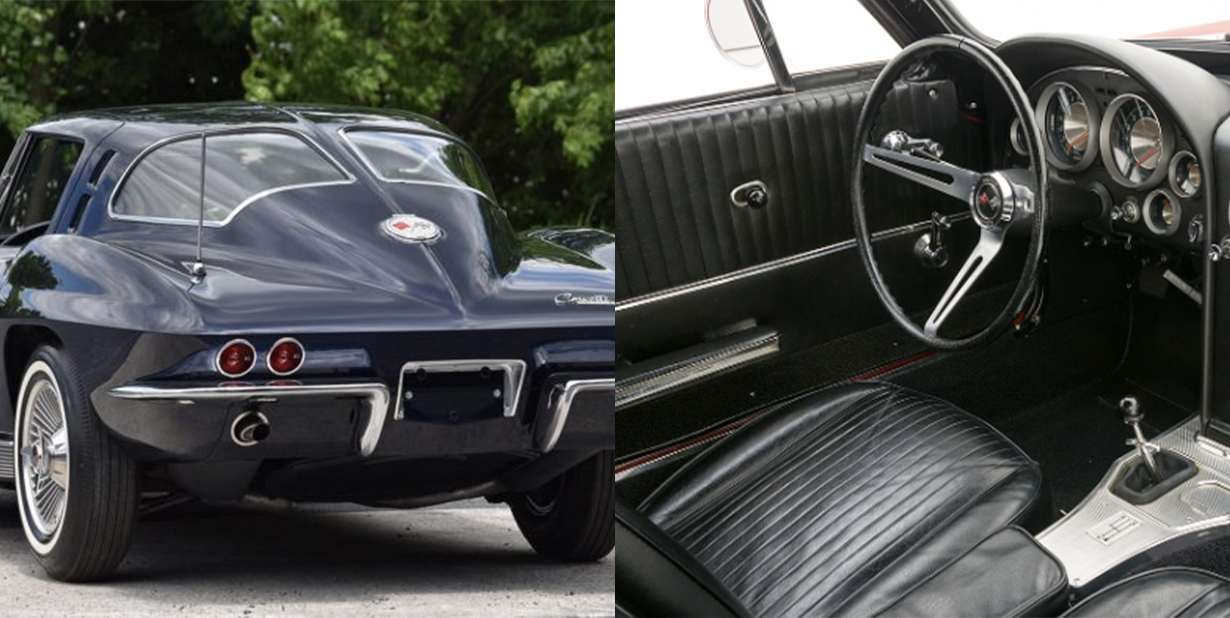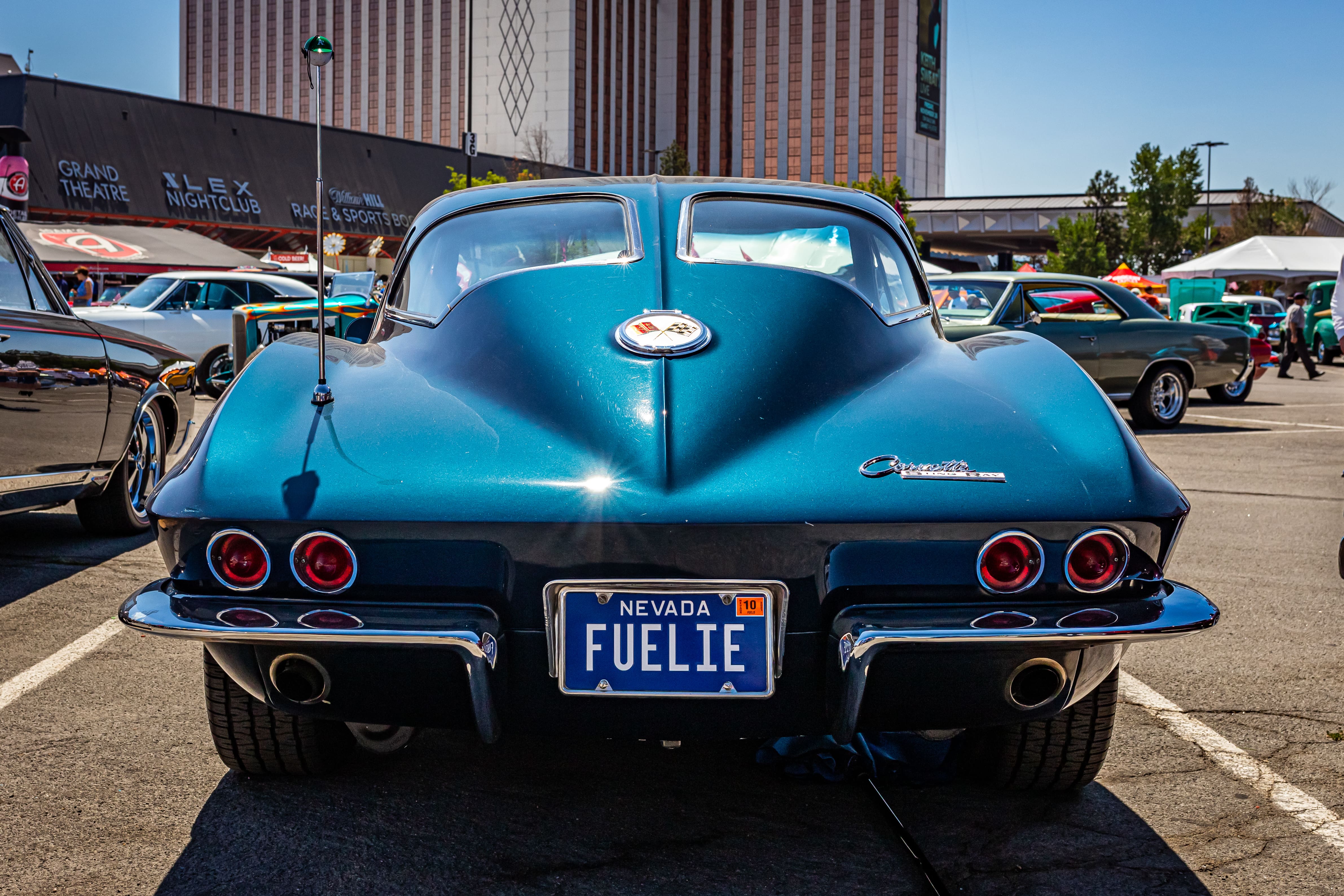1963 Chevy Corvette

The Chevy Corvette is the most collected vehicle in America. In fact, Keith Martin of Sports Car Market has dubbed the second generation (1963-1967) the “most iconic American car ever made” because it is “still breathtaking and fresh today.”
Best part is, early generation Corvettes are still abundant in the U.S., so deals are not entirely out of reach. It continues to be one of the most prized collectible automobiles in history.
The “Stingray”
The 1963 Chevrolet Corvette was the first production model of the second generation, known as the C2. This is also the first time the name “String Ray” was given to the Corvette. Later, in 1968, the nickname was tapered to a single word: Stringray.
The name stuck around until 1984 when the fourth generation arrived. It was brought back again in 2014 for the seventh generation.
Exterior Design
When it comes to design, the 1963 Chevy Corvette had breakthroughs in expansion and appearance with an entirely new frame and new nose. The exterior design seamlessly combines shape and work with classic fashion.
The clean front-end design is a trademark, with the pop-up headlights being the most recognizable feature. They’re hidden when not in use and gracefully opened up when needed. These headlights were strategically placed on either side of the grille specifically for a unique horizontal bar style.
Additionally, the chrome plated front bumper offers a touch of refinement that is much appreciated by auto enthusiasts.
Exterior Design
The Chevy Corvette’s rear-end design also boasts some recognizable characteristics.
The two-piece, parted back window stands as one the vehicles most unmistakable features as it set it apart from other automobiles of the time. A bar divided the window vertically, giving it a unique look.
As well, the skillfully built rear deck cover, which included smooth lines and a small lip, gave the car an aerodynamic perspective, becoming a symbol of the Corvette’s combination of execution and style.
Exterior Design
Other interesting design details include the doors cut into the roof of the vehicle, and the absence of a trunk lid.
Serious consideration was given to the Corvette’s design in order to optimize proficiency and capability at higher speeds.
Keeping the classic fiberglass body construction from previous designs, the 1963 Corvette continued its lightweight tradition. It was surprisingly quiet for fiberglass, which is likely due to the steel reinforcement surrounding the entire passenger section.
Exterior Design
The shape, along with the headlights and fake hood vents, were all meant to improve aerodynamic efficiency.
All-around performance was greatly improved when the X-brace frame was replaced by the steel ladder-type frame. This provided a lower center of gravity, placing more weight on the rear wheels.
Interior Design
The most notable component of the 1963 Chevy Corvette’s interior was the seat design as it improved both the driver’s and passenger’s comfort.
The car’s bucket seats were designed to keep passengers comfortably in place during more spirited driving, with the leather material offering a luxurious feel.
Interior Design
The 1963 Chevy Corvette’s three-spoke steering wheel was a popular design for vehicles of the time. The specific shape served to give drivers a comfortable hold with a feeling of control, completing the car’s authenticity.
The dashboard was clear-cut and simple, focusing on driver accessibility.
Engine & Performance
The 1963 Chevy Corvette had several engine choices.
The 5.4-litre V8 essential engine was accessible in two varieties:
- 250-hp, 327 cubic inch V8
- 300-hp, 327 cubic inch V8
For people looking for more power, two high-performance engine options were available:
- 327 cubic inch, 340-hp fuel-injected V8
- 327 cubic inch, 360-hp fuel-injected V8
The 327 cubic inch, 360 drive fuel-injected V8 was the most powerful engine choice. This engine, along with the 375 drive, created insane power and torque.
Rarity
The 1963 Chevrolet Corvette is recognized as one of the most popular vehicles in history and is a known collectible.
Compared to other vintage sports cars from the same period, the 1963 Chevy Corvette remains in high-demand. The mix of engine choices, especially the fuel-injected variants, make them highly desirable among collectors.
Price
Depending on condition, originality, and demand, the current price of a 1963 Chevrolet Corvette can cost anywhere from $30,000 (restorable condition) to $150,000 or more (pristine condition, original specifications).
Legacy
To this day, the 1963 Chevy Corvette remains known as one of the best classic cars ever made—mostly due to it’s exceptionally unique split rear-window design.
Given its legendary name, the Stingray, it set a new standard and design for generations of Corvettes to come.


















